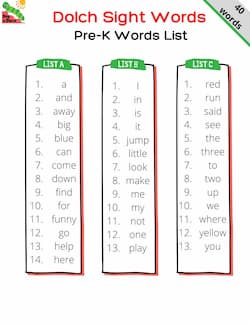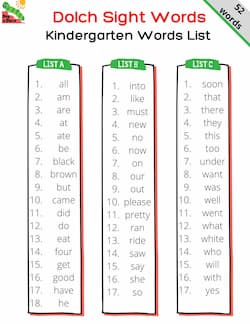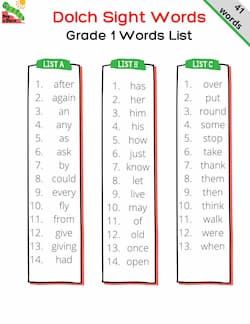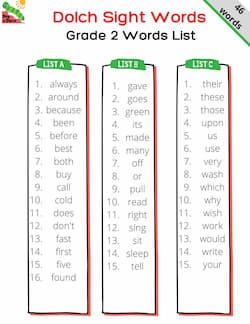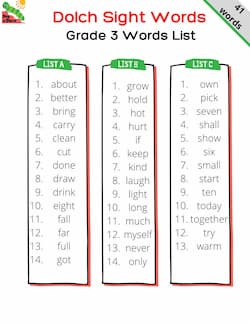When I first came to Canada, I was unaware of the list of Sight Words. Till then, I had been teaching or rather playfully introducing my son (then three-years-old) to popular nouns and action words. My friend introduced me to these high-frequency words that even though widely used are hard to visualize as well as do not necessarily follow the basic phonic principles.
The Dolch word list is a list of frequently used English words (also known as sight words), compiled by Edward William Dolch, a major proponent of the "whole-word" method of beginning reading instruction. The list was first published in a journal article in 1936[1] and then published in his book Problems in Reading in 1948.[2]
Dolch compiled the list based on children's books of his era, which is why nouns such as "kitty" and "Santa Claus" appear on the list instead of more current high-frequency words. The list contains 220 "service words" that Dolch thought should be easily recognized in order to achieve reading fluency in the English language. The compilation excludes nouns, which comprise a separate 95-word list. According to Dolch, between 50% and 75% of all words used in schoolbooks, library books, newspapers, and magazines are a part of the Dolch basic sight word vocabulary; however, bear in mind that he compiled this list in 1936.
Source: Wikipedia**
Introducing kids to the Dolch sight words at an early age will help them develop a ready cache of words. So, when they read a book or text, they don't necessarily need to process and decode every word, thus making reading a less tedious task for new readers. It will also help build the confidence of the child and make reading enjoyable experience. To read about a more detailed take of strategies for developing comprehension follow this link
The list of 220 Dolch sight words are categorized as per the grade level to provide for easy guidance to educators and parents alike. While introducing a new list, I find it useful in breaking down the list to a set of around 10 words for the first day. Next day we start with revising the old 10 and go on till 20 words. Each grade level doesn't have same number of words, hence I have divided the respective alphabetically sorted list into three columns. Hope you find this format useful.



